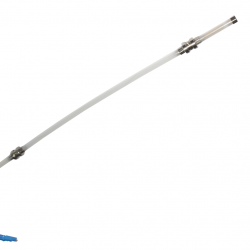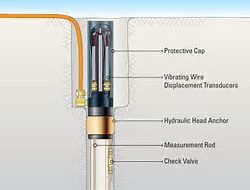Description
In the Brazilian test, a disc shape specimen of the rock is loaded by two opposing normal strip loads at the disc periphery. The specimen diameter shall preferably be not less than NX core size (54 mm), or at least 10 times the average grain size. The thickness/diameter ratio should be 0.5 to 0.6. The load is continuously increased at a constant rate until failure of the sample occurs within few minutes. The loading rate depending on the material and may from 10 to 50 kN/min.
Applications
Rock Mechanics Lab testing
Curved loading jaw suitable for use on lab testing frames
Platens are designed to be adapted to the ESS PLT10 point load tester. Matching threads are cut into the spherical seats
Can be used on any third party loading frame
Manufactured in accordance to the ISRM suggested method for determining indirect tensile strength by the Brazil test














